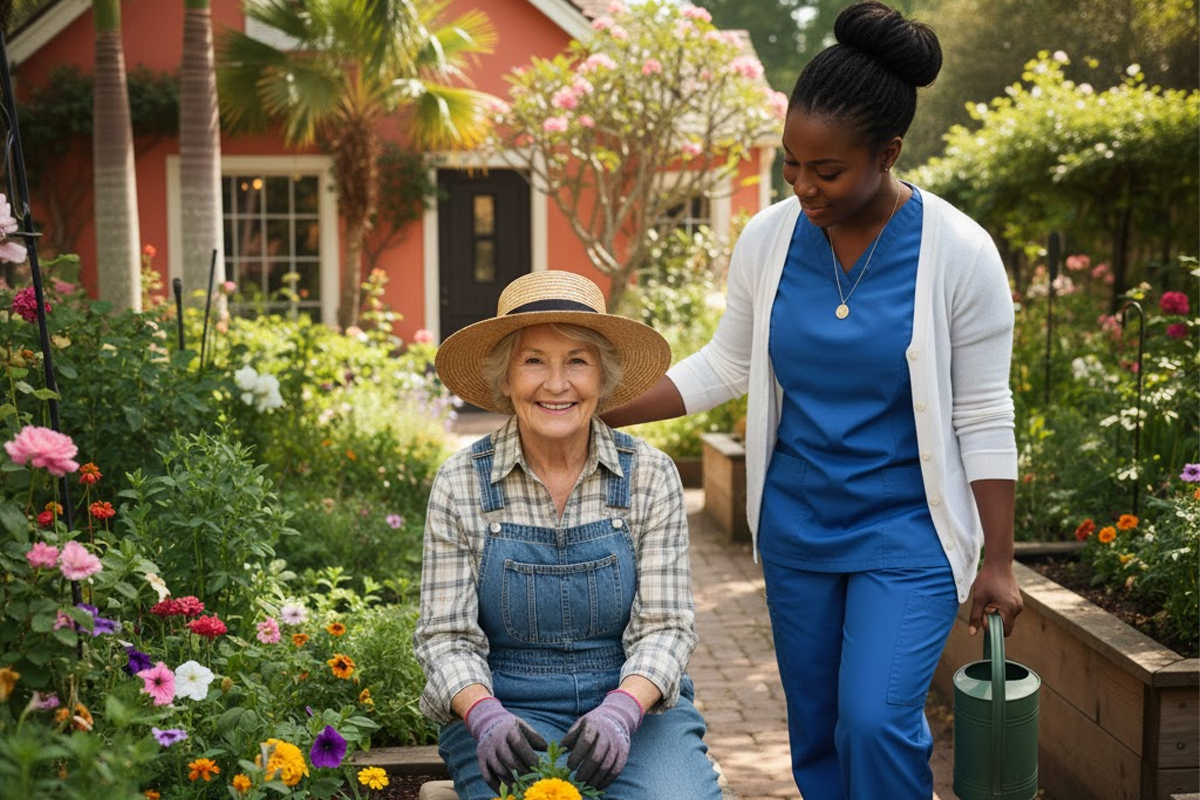Share
According to an AARP survey, the general consensus that older adults and technology don’t mix is inaccurate. On the contrary, technology is an integral part of seniors’ lives with more than 55 million people aged 50 and older taking an interest in technology that can make their lives easier or better.
The health care industry also embraces emerging technologies to make medical services accessible and more helpful to seniors and caregivers. Here’s a look at several of those technologies.
Telehealth Services
Also referred to as telemedicine, it’s one of the fastest-growing technologies in the senior care industry. It allows health care providers and loved ones to get a comprehensive look at the well-being of seniors in their care. Telehealth services include videoconferences and remote monitoring so that patients don’t need as many office visits for their doctors to stay up to date on their care.
For instance, physicians and caregivers can see activity levels, blood glucose levels, blood pressure, heart rate, and sleep habits through telemedicine technologies. Patients can see all of this information as well, which allows them to make better everyday decisions regarding their health.
Electronic Health and Medical Records
Paper charts have largely been replaced with digital records called electronic health records and electronic medical records. It’s more common to see doctors accessing patient records on laptops than on clipboards. The digital records track patient data, including diagnoses and treatments, while various software allows physicians and caregivers to transfer and share all of this information seamlessly.
As a result, they can provide real-time interventions when necessary. The accuracy of this technology also prevents medical errors. In fact, medical software can detect allergies and contraindications, find trends and patterns, and create reports to speed up diagnosis and treatment processes.
Medical Alert Devices
For years, the senior care industry has been using medical alert devices that make it easy for older adults to call for help if they fall or have some other kind of incident. These home units, wearables, and mobile technologies continue to improve. Some of them alert the appropriate emergency contacts and provide GPS locations for dementia patients who wander outside of predetermined areas.
Pill Boxes With Alarms
When older adults find it difficult to manage their prescriptions on electronic devices, pillboxes with alarms are an option. Alongside smart pill bottles, they use phone calls or text messages to tell seniors exactly which medications to take and when to take them. Some of them even connect to doctor offices and pharmacies so that they can monitor this activity.
Internet-Connected Devices and Artificial Intelligence
Computers, smartphones and other smart devices are continuously connected to the internet. While more than 90% of adults aged 50 and older use a computer, 80% have a smartphone. There are tons of apps available to help them and their caregivers monitor their medications, doctor visits, and more. Many apps and websites exist to assist loved ones with finding caregivers too.
On top of that, about 14% of older adults use devices with artificial intelligence or home assistants, such as Amazon Alexa and Google Home. They even take advantage of learning opportunities, such as how-to tutorials and online classes.
If you care for an older loved one, there may be times when you need help coordinating his or her care. Whether you need help with day-to-day activities or post-surgery care, Caring Home Care can pair your loved one with an in-home caregiver who can provide assistance.
Connecting During the Thanksgiving Holiday: How to Support Your Elder Relatives The Thanksgiving holiday is a time filled with warmth, gratitude, and meaningful family traditions. However, for many older adults, it can also be a period of loneliness or emotional distance. This is especially true for seniors who live alone, have limited mobility, or are
Transition to In-Home Care: Helping Seniors Adjust Comfortably to Elderly Care Services Understanding the In-Home Care Transition The decision to begin in-home care is a big step for both seniors and their families. It often marks the start of a new chapter—one focused on safety, comfort, and support. However, the in-home care transition can bring
Celebrate Holidays with Seniors: Creating Joyful and Meaningful Moment The holiday season is a time of warmth, joy, and connection. For seniors, it’s an opportunity to celebrate cherished traditions and create new memories with loved ones. However, the holidays can also bring challenges — from health concerns and limited mobility to feelings of loneliness. With
Benefits of Gardening for Seniors Gardening is more than just a hobby — it’s a therapeutic and rewarding activity that promotes physical, emotional, and mental well-being. For older adults, the simple act of planting flowers or tending to vegetables can provide a sense of purpose, connection, and peace. Whether done in a backyard, balcony, or
Need A Caregiver? Fill Out Form Below
With our competitive rates, we make receiving in-home care affordable regardless of whether you’re using your insurance or paying out of pocket.







